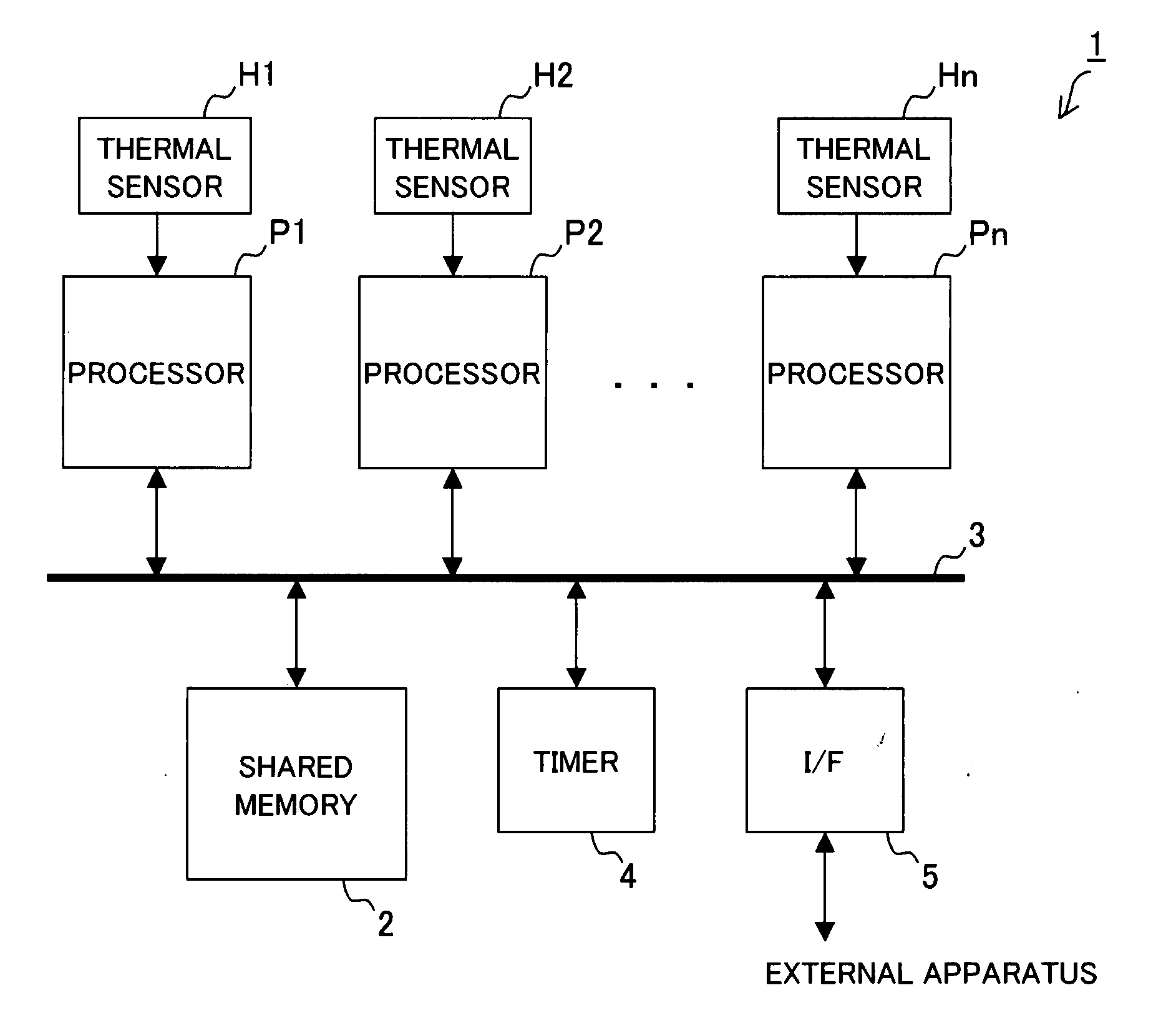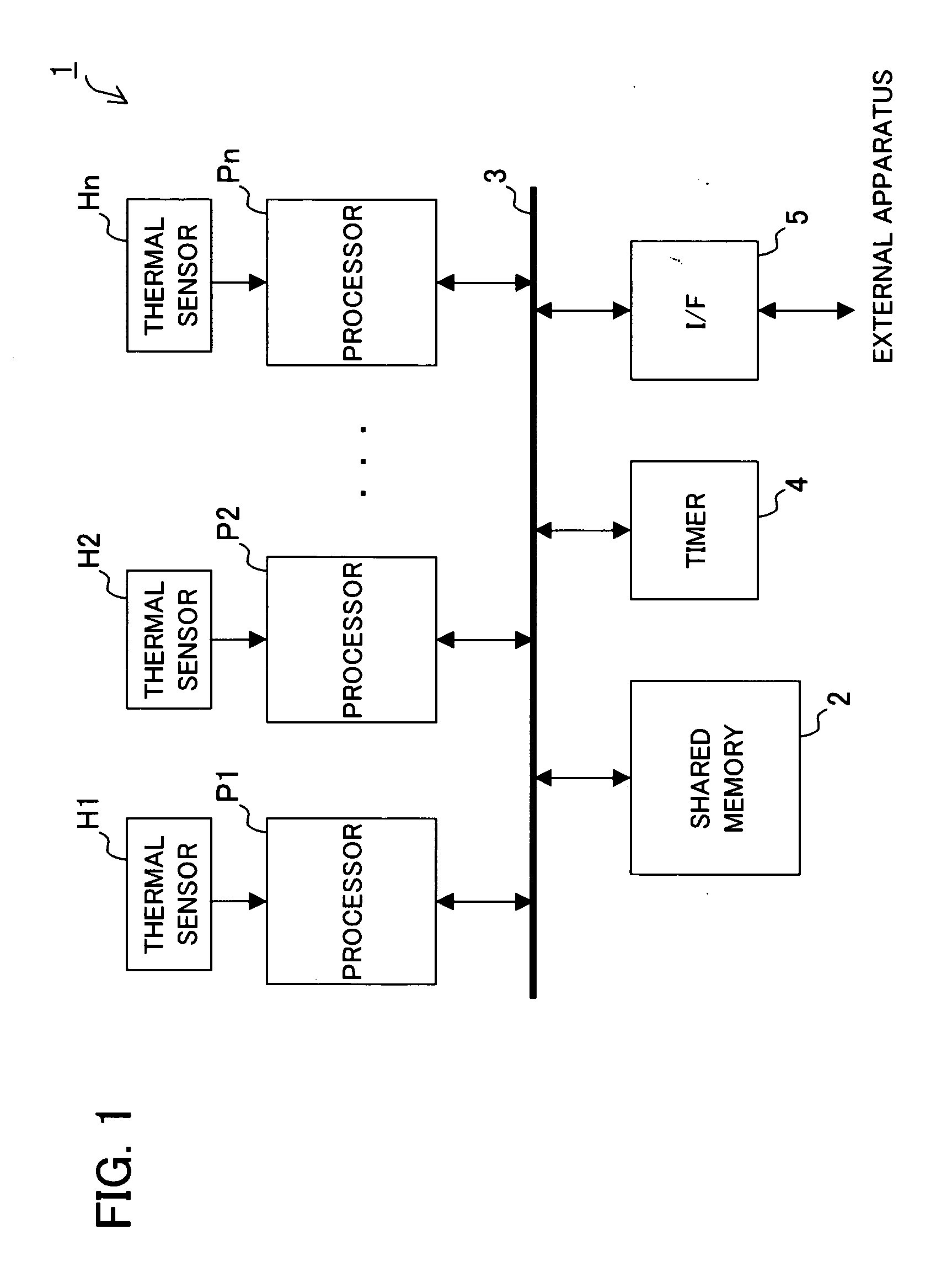Task scheduling apparatus in distributed processing system
a task scheduling and distributed processing technology, applied in multi-programming arrangements, digital computer details, instruments, etc., can solve the problems of increasing the generated heat quantity of the processor, increasing the consumption power of the processor, and increasing the temperature of the processor
- Summary
- Abstract
- Description
- Claims
- Application Information
AI Technical Summary
Benefits of technology
Problems solved by technology
Method used
Image
Examples
first embodiment
[0027]FIG. 1 shows a block diagram illustrating an exemplary configuration of a distributed processing system according to a first embodiment of the present invention. This distributed processing system 1 is, for example, a multiprocessor system in a single housing, and includes n processors P1-Pn (where n is an integer of 2 or more, the same being applicable hereafter), n thermal sensors H1-Hn, a shared memory 2, a bus 3, a timer 4, and a communication interface unit (I / F) 5.
[0028] Processors P1-Pn, shared memory 2, timer 4, and I / F 5 are connected to bus 3. Through bus 3, processors P1-Pn read out a program or a data stored in shared memory 2, or write a program or a data generated through processing into shared memory 2.
[0029] Each processor P1-Pn is exemplarily configured of CPU, MPU, or the like, or an apparatus (for example, a processor board) configured of CPU, MPU, or the like, with its peripheral hardware circuits. This processor has a memory (including a cache memory) in...
second embodiment
[0096]FIG. 5 shows a block diagram illustrating an exemplary configuration of a distributed processing system according to a second embodiment of the present invention. This distributed processing system 10 is a distributed computing system including a controller 11, n nodes N1-Nn, and a communication network 12.
[0097] Nodes N1-Nn and controller 11 are connected to communication network 12, and can communicate mutually via communication network 12. Communication network 12 is exemplarily constituted of LAN, Internet, etc.
[0098] Each node N1-Nn is, for example a computer, including a processor 21 constituted of CPU, MPU, etc., communication interface unit (I / F) 22 for performing communication interface processing, and a thermal sensor 23 for measuring temperature of processor 21.
[0099] Controller 11 is, for example a computer, of which internal memory (not shown) has data identical to the data in shared memory 2 shown in FIG. 2. Namely, the internal memory has the OS including the...
PUM
 Login to View More
Login to View More Abstract
Description
Claims
Application Information
 Login to View More
Login to View More - R&D
- Intellectual Property
- Life Sciences
- Materials
- Tech Scout
- Unparalleled Data Quality
- Higher Quality Content
- 60% Fewer Hallucinations
Browse by: Latest US Patents, China's latest patents, Technical Efficacy Thesaurus, Application Domain, Technology Topic, Popular Technical Reports.
© 2025 PatSnap. All rights reserved.Legal|Privacy policy|Modern Slavery Act Transparency Statement|Sitemap|About US| Contact US: help@patsnap.com



